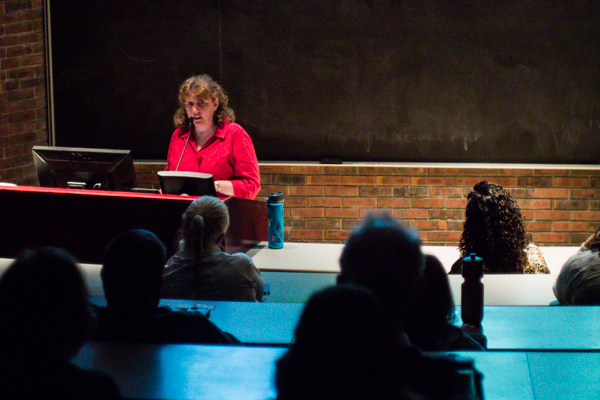

On Monday, Sept. 22 at 7 p.m., Art History Chair and Professor Kerry Dean Carso held a presentation to a completely filled Lecture Center 104 on how 19th century art impacted future conservation efforts.
Part of a series of events SUNY New Paltz is holding in celebration of the 50th anniversary of the Wilderness Act of 1964, Carso’s lecture was titled “Landscapes of Nationalism and the Roots of Conservation in Nineteenth Century America.”
Carso discussed the “unusual link” that Hudson River School painters Thomas Cole and Sanford Robinson Gifford had with conservationists. The “link” began with James Pinchot, a wealthy man who made a living through a wallpaper business, land speculation and lumbering.
Carso emphasized that Cole was a huge conservationist. Carso said Cole felt the wilderness was “an American birthright,” and that “the most impressive characteristic of American scenery is its wildness.”
“On one side, you have the natural wildness and power of nature demonstrated by the tree branches,” Carso said. “On the other side, the viewer sees a tame, groomed landscape, ready to be used for farming or a railroad.”
Pinchot was influenced by the art that he collected, and by the viewpoints of the artists. Feeling terrible about his past business ventures, Pinchot urged his son Gifford to become a forester.
Gifford would go on to become the first director of the United States Forest Service in 1905. With the creation of the forest service came the National Wilderness Protection System, which now protects over 109 million acres of land in the United States.
In 1886, James Pinchot had a castle constructed in Milford, Pennsylvania, which is now known as Grey Towers. Gifford Pinchot spent much of his life in the towers, which also became home to many of James Pinchot’s favorite paintings.
In 1963, the Pinchot family donated the castle and the 102 surrounding acres of land to the Forest Service. The Pinchot family donated much of the artwork that they collected over the years as well, and the Forest Service sold the works to collectors, using the money to help fund conservation efforts.
Carso stayed at Grey Towers this year, and was awarded the “Scholar-In-Residence” title by the historic site.
Carso is releasing a book in November, titled “American Gothic Art and Architecture in the Age of Romantic Literature.”
